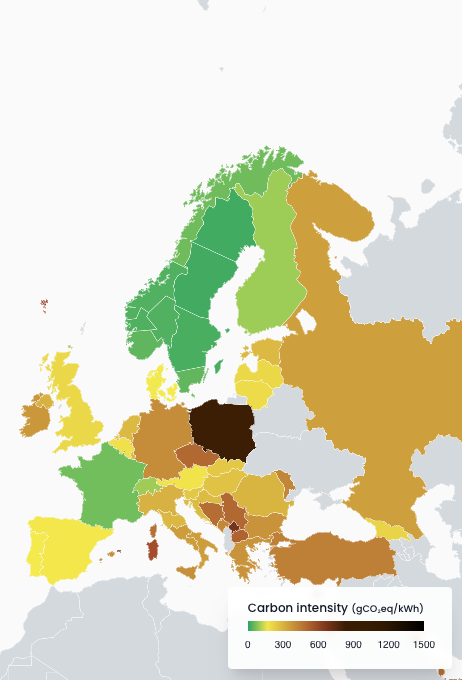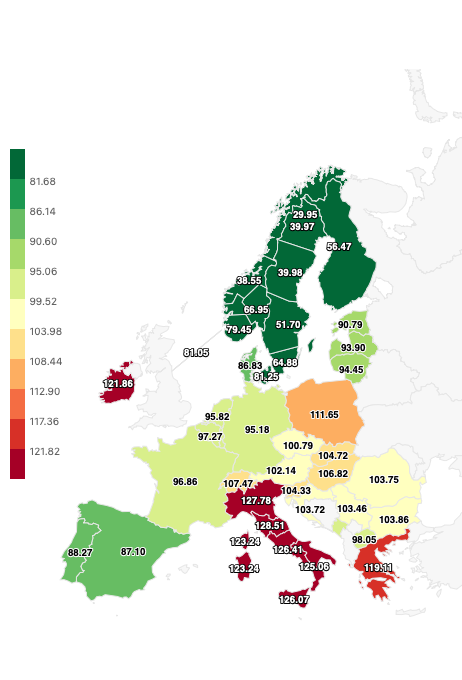Northern Sweden as a pioneer in the green industrial revolution – Why is it happening right here?
The green industrial revolution, a transformative shift aimed at reducing carbon emissions and mitigating climate change through sustainable technologies and practices, finds a pioneering hub in Northern Sweden (“Norrland”). This region, renowned for its vast forests, abundant water resources, and commitment to environmental stewardship, has emerged as a global leader in sustainable innovation. So much so that McKinsey & Co, among others, have named it the “Silicon Valley for Sustainability”.
Norrland’s renewable energy advantage is exemplified by endeavors such as Northvolt, H2GreenSteel, Hybrit, Fertiberia Sweden and Liquid Wind. Northvolt, a Swedish battery manufacturer, is leading the charge in developing sustainable lithium-ion batteries for electric vehicles and energy storage systems. With a state-of-the-art gigafactory located in Skellefteå, Northvolt leverages the region's abundant renewable electricity to produce batteries with minimal carbon footprint. H2GreenSteel and Hybrit, two other pioneering projects in Northern Sweden, focus on decarbonizing the steel industry through hydrogen-based processes. Fertiberia, a Spanish fertilizer manufacturer, recently announced plans to establish a green ammonia production facility in the region.
Liquid Wind focuses on producing carbon-neutral liquid fuel. Through a process known as Power-to-Fuel, Liquid Wind uses renewable electricity to produce eMethanol, a sustainable alternative to traditional fossil fuels. By capturing biogenic carbon dioxide emissions from industrial sources and combining them with renewable hydrogen, Liquid Wind creates a closed-loop system that significantly reduces carbon emissions. This innovative approach has the potential to revolutionize the transportation sector, offering a scalable solution for decarbonizing shipping, aviation, and other hard-to-abate sectors.
So why is all this happening here?
Common to all these companies is the crucial need for substantial quantities of fossil-free electricity, at competitive rates, to support their production. As illustrated by the pictures below (one showing carbon intensity of electricity production and the other displaying yearly average power price), this is exactly what sets Northern Sweden apart from almost all other regions of Europe.
Picture 1: Carbon intensity of electricity consumed (gCO2eq/kWh) in Europe in 2023 (source: https://app.electricitymaps.com/map) / Picture 2: Average electricity spot market prices (EUR/MWh) in Europe in 2023 (source: https://www.energy-charts.info)
Sweden’s power system has been (98%) fossil-free since the 1970’s and 80’s, when the country’s considerable hydroelectric generation capacity was complemented by a large build-out of nuclear power, edging out coal and oil for power production. In the northern part of the country, hydro power is the dominant source of power generation. The region's numerous rivers provide vast opportunities for hydropower development. Hydroelectric dams, such as those on the Lule and Ume rivers, produce large quantities of electricity at relatively low costs.
In addition, the significant and growing portion of electricity provided by wind power further influences the energy landscape and electricity prices to an increasing extent. The region's favorable geographical conditions, including expansive coastal areas and high-altitude terrain, make it well-suited for wind power generation. As a result, wind farms have become increasingly prevalent in Northern Sweden, contributing to the region's renewable energy mix. Wind energy, like hydro power, benefits from low operating costs, allowing wind power producers to offer electricity at competitive prices. This increased competition among renewable energy sources helps to keep electricity prices relatively low for consumers in Norrland.
Moreover, limited transmission capacity presents challenges in transporting electricity from the scarcely populated northern regions to the southern parts of Sweden, where most of the population and industrial activity are concentrated. As a result, electricity generated in Northern Sweden tends to be consumed locally or regionally, and the surplus electricity that cannot be transported to the southern parts of the country leads to lower prices in the north, as supply exceeds local demand.
In conclusion, Northern Sweden's abundance of renewable electricity and relatively moderate power prices position it as a global leader in the green industrial revolution. By leveraging its natural assets, the region is driving innovation, economic growth, and environmental stewardship, serving as a beacon of hope in the fight against climate change.
Content contributor
Jonas Alin, Project Director, Liquid Wind


